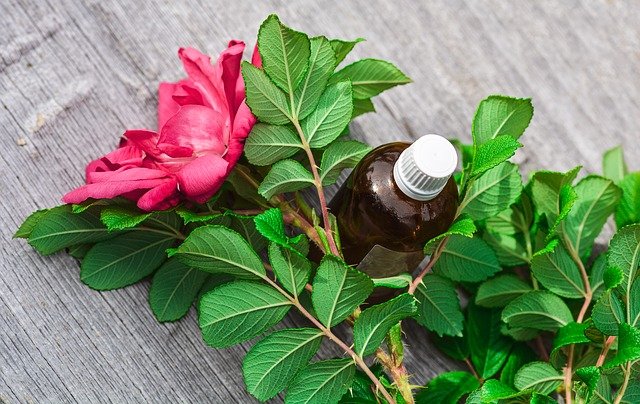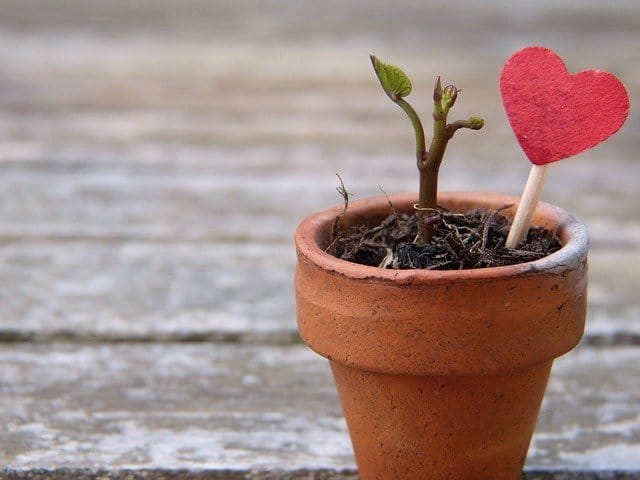Have you ever thought of adding rose essential oil to your beauty routine? Or perhaps to add to your aromatherapy collection? It’s one of the most highly prized essential oil not only for its intoxicating scent but also for the touted health benefits. Maybe the only thing keeping you from buying it is the amount it would cost you for a tiny bottle.

Why is rose essential oil expensive? It’s the high cost of production resulting to low supply versus the high demand from the market.
In this post, I’ll go into detail on the complexity of the harvest and distillation process of the rose essential oil that ramps up its cost and whether or not it’s possible to DIY at home.
High Cost of Production
Do you know how much labor is involved in producing a 15ml bottle of rose essential oil?
There are a lot of factors that affect the prices of essential oils significantly.
As I will quote in this study, the essential oils “chemical composition may already vary in the starting material, being influenced by plant health, growth stage, habitat including climate, edaphic factors, as well as harvest time”
Rose essential oil is expensive because of the complexity of its production:
1. Petals are the only part of the rose plant that is used for oil extraction.
Unlike some essential oils where you can distill all plant parts like twigs, leaves, or bark, rose essential oils are made only from its fragrant petals. It takes 10,000 pounds of rose petals to produce one pound of rose essential oil.
2. Roses have naturally low oil content.
The rose plant doesn’t really release essential oil as easily and as abundantly as other plants, such as citruses.
The rose petals have to be distilled for a long time before they are ready to express their essential oil. This means that a lot of water, energy, and labor is needed for this process.
3. Only 2 species of Roses are suitable for essential oil production.
With over 150 species of roses (and thousands of hybrids), only 5 or 6 species are used for the production of essential oil — 2 of which are more commonly cultivated than the rest: the Damask Rose and the Cabbage Rose.
4. Roses have to be harvested by hand.
The flowers have to be painstakingly picked by hand. Rose plants are also expensive when they are harvested by hand as you’ll need to pay for the people who have done the work.
5. Roses have to be harvested just before the sunrise.
The optimum time to harvest flowers is in the early hours of morning, when hundreds or thousands of rose pickers work the fileds. This is when the rose has the highest concentration of oil content. To prevent the day heat from evaporating the roses’ oil content, flowers are picked when the rose has just opened its petals and releases its fragrance into the atmosphere, just before the sun rises.
6. The rose petals have to be distilled on the same day it was harvested.
the crop that was harvested for the day is matched to the quantity that can be distilled in the same day to keep the flowers fresh and prevent the oil from evaporating and losing its quality. It’s crucial for the distillation facility to be situated in close proximity to the rose field so that it can be processed as quick as possible and prevent further deterioration.
7. Roses are particularly grown in a unique climate and soil conditions
The air humidity, cloudiness and precipitation (particularly in May and June, the blooming months of roses) contribute to the cultivation of roses that yield very high percentage of oil.
8. Demand for Rose essential oil as a raw material is high
The essential oil industry is booming in this age of naturalists and “self-care” generation and is the rose essential oil in particular is marketed as a luxury end-product. There is mostly a strong demand for rose essential oil as a raw ingredient for pharmaceutical and luxury products. This means that oil producers are able to charge higher prices because these industries are still willing to pay for it regardless of cost. The downside is that the end-buyers (you and me both) will also have to pay for the premium price that is set in the market.
9. There are only a few of quality oil producers for rose essential oil
We now know that quality-made rose essential oil is sourced from key rose plant species that are grown in unique climate and soil conditions with the right air humidity, cloudiness, and rainfall. This means that there are only few places where this oil can be produced without compromising the correct process for its harvest and distillation. There are few oil producers who would have the financial capacity to support the environment and care that the plants would need in order to boost its oil content for extraction
10. Roses have an unpredictable stability of supply
Even if oil producers would plant more roses to try to meet the demand, ultimately, there’s only limited natural resources (land, water, etc.) to manage the care it needs. Where availability of resources is strained, prices increases.
11. Special storage & shipping adds to the cost of Rose essential oil.
The storage and preservation of essential oil is more complex than you may know.
“Regular quality control of essential oils by producers, traders, or essential oil manufacturers generally covers the quality of essential oil subsequent to production or distribution as a rule under suitable oxidation-preventing conditions.” (source)
While essential oils are small and do not really weigh much, it is highly volatile and is easily affected by factors like light or temperature changes. When exposed to light or heat, the smell might change, due to photo-oxidation. This is called Photodegradation, and this is why quality-produced essential oils come in dark colored bottles like amber or cobalt blue. These light-resistant bottles are a bit pricier than clear bottles.
Additionally, because breakage is probable, an insane amount of padding is needed when shipping them. This, along with other other packaging materials like labels and boxes, not to mention the logistics in transporting these oils with as little exposure to light and temperature changes, drive up the cost of shipping Rose essential oils.
12. Rose essential oil has to go through testing and certification process.
Rose is touted for its health benefits only if the essential oil is certified pure and organic. If it’s going to be marketed as such, it has to go through a lengthy and costly testing and organic certification process. The fees, which are going to be carried over to the consumers of the rose essential oil, may also vary according to the country’s laws on organic products.
Is it Possible to Make a Rose Essential oil from Home?
Please don’t hate me, but for all the reasons I listed above on why rose essential oil is expensive, they’re also most of the reasons why I believe it’s almost impossible to distill TRUE rose essential oil from home.
A home garden would simply not have enough real estate to grow the number of special rose plants that need specific climate conditions for optimal oil content in the petals.
And even if you have acres, you will need specialty equipment, enough flower pickers for that time-sensitive harvest, among all other things that we’ve just talked about.
However, it is still possible to enjoy the beautiful rose scent from your garden by making your own rose infused oil.
How to Make Your Own Rose Infused Oil
A rose infused oil is more accessible for home crafters than essential oils. It’s a lot easier to make and doesn’t require much time or money to produce.
Think of it as a much diluted version of an essential oil. Unlike essential oil, the rose infused oil will not have the same potency (which are vital for medicinal uses), but it will have some of the broader biochemistry of the rose plant.

1. Prepping the Rose Petals
Ensure that the rose petals that you’re going to use are organic and free of pesticides. Wash the rose petals and let it dry on paper towels.
I recommend using dried rose petals because I worry about because of the high water content in fresh petals which might cause condensation and mold to develop in the infusion.
If using fresh rose petals, I suggest to wilt it first in a warm area, but away from direct sun, in a single layer. This will lessen the water content but still preserve the aroma.
Sanitize and dry a wide-mouth glass jar. Tear the rose petals and place in the jar until about 2/3 or 3/4 full. Then fill the jar with your chosen carrier oil (grapeseed, oilive oil, jojoba, etc.) , making sure that the oil covers all the petals by at least an inch.
Note: If using harder butters like shea or coconut oil, you might need to put the jar in a bain marie or hot water bath to melt the oil completely.
2. Heat the Rose Petals in the Carrier Oil
Screw the lid on the jar and seal tightly and shake to incorporate. Place the jar on a pot of freshly boiled water and leave it there until the water cools down. Alternatively, you can place in a sunny window where you can easily access your infusion to shake and inspect from time to time.
3. Store the Rose Infused Oil
The infusion will be ready to use it in 24 hours, but I suggest to let the infusion steep for 2 to 6 weeks. Of course, the longer it steeps, the more potent it is. You can opt to top up with more rose petals to steep again for a stronger infusion.
When the infusion is ready, You may choose to strain it into a smaller clean and dry glass bottle (preferably amber or dark-colored) lined with cheesecloth or muslin.
You rose infused oil may keep up to 6 months, and maybe up to a year if using dried rose petals.
In Conclusion
The high-cost of the production of the rose essential oil is the main reason why it is very expensive. It involves a lot of equipment, chemistry, and labor, to make its production possible, which is why it’s difficult to produce at home. But while it is expensive, looking at $100 or more for a 15ml bottle, people are still willing to buy it because of the captivating aroma and the therapeutic benefits that come with it.





